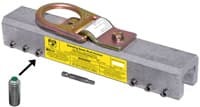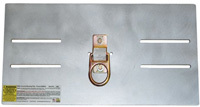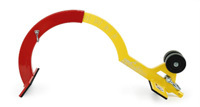Fall Protection For 1st Coast Standing Seam Roofs
Posted by Howie Scarboro - CEO Fall Protection Distributors, LLC on Nov 1st 2024
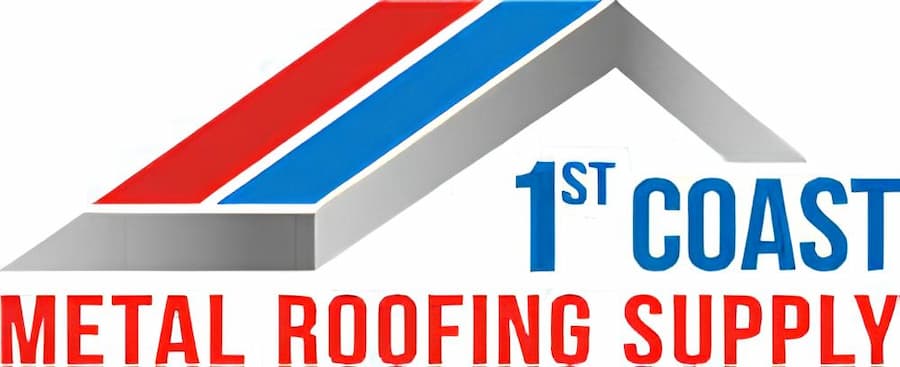
1st Coast Metal Roofing Supply: A Legacy of Quality and Service
1st Coast Metal Roofing Supply's story began in 1967 when Bob Sizemore and Bill Kuhn launched their general contracting business in Florida's 1st Coast and Palm Coast areas. Their mission was clear from the start: provide the highest-quality building products at a fair price. This dedication to quality has remained a core value as the company has evolved over the decades.
After 31 successful years in construction, Sizemore and Kuhn saw the future in metal roofing. In 1998, they shifted their focus entirely to metal roofing, which laid the foundation for the company's growth. Metal roofing's durability, long-term protection, and energy efficiency perfectly match their values. As the demand for metal roofing grew, 1st Coast Metal Roofing Supply expanded, investing in state-of-the-art equipment and moving to a larger facility. By 2016, they were manufacturing their panels, enabling them to offer faster service and meet customer needs more efficiently than ever.
Today, 1st Coast Metal Roofing Supply is known throughout Florida for producing durable, hurricane-rated metal roofing products. Their panels are designed to withstand extreme weather conditions, from intense UV exposure to hurricane-force winds, making them a top choice for homeowners and roofing professionals.
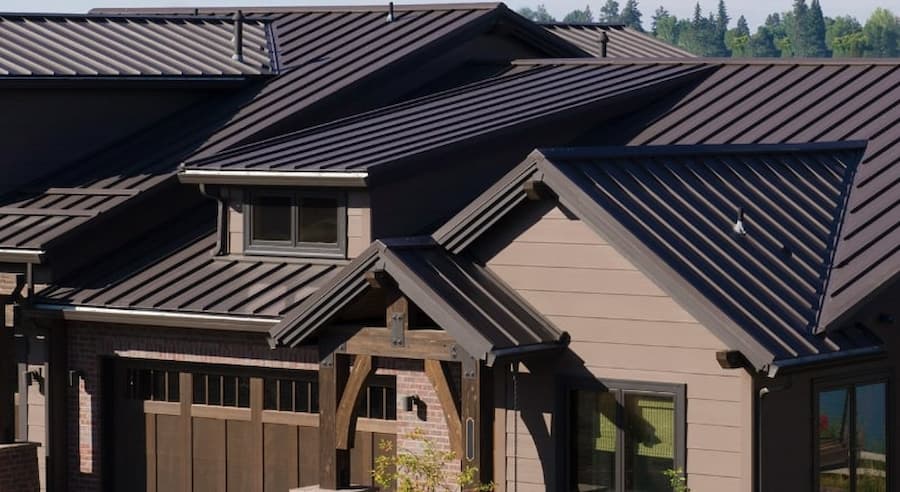
Why Specialized Fall Protection is Crucial for Standing Seam Roofs
Safety is paramount when working on standing seam roofs, especially those produced by 1st Coast Metal Roofing Supply. While all roofs present risks, standing seam roofs have unique challenges. These sleek, smooth panels are designed with hidden fasteners for aesthetic appeal and enhanced weather resistance, but that also means traditional fall protection methods won't work.
The Problem with Traditional Anchors
Drilling into a standing seam roof to attach a standard fall protection anchor can compromise its integrity. Not only can this create leaks, but it also voids the warranty on most metal roofing panels. For this reason, specialized, non-penetrating fall protection anchors are essential.
Non-Penetrating Solutions for Standing Seam Roofs
Manufacturers design the SSRA1 Seam Anchor and similar products for standing seam metal roofs. These anchors clamp onto the raised seams without penetrating the panels. This design preserves the roof's weather tightness while providing a secure attachment point for fall protection gear. For steeper roofs, the Ridge Pro Steep Assist Anchor adds another layer of security, especially when working on slopes between 6/12 and 12/12.
Using the proper fall protection products, contractors can ensure their safety without compromising the roof's performance. At 1st Coast Metal Roofing Supply, roofing professionals can work confidently, knowing that specialized solutions protect them on top of high-performing metal roofs.
Armour Loc Panels: Durable and Cost-Effective Metal Roofing
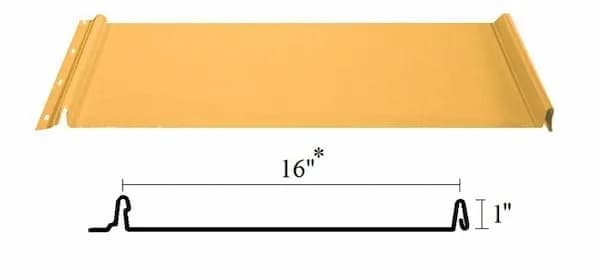
1st Coast Metal Roofing Supply's Armour Loc Panels balance long-lasting durability, energy efficiency, and affordability, making them a popular choice for homeowners and businesses. These Nailstrip panels are available in 26-gauge steel, 24-gauge steel, and .032 aluminum, giving you the flexibility to choose the suitable material for your project. See the Roof Anchor Compatibility Chart for 1st Coast Metal Roofing Supply Armour Loc Standing Seam Metal Roofing.
Why Armour Loc Panels Are a Smart Choice
Not only do these panels provide a clean, modern look, but they also come with several long-term advantages:
Durability: Designers create Armour Loc panels to last for decades, reducing the need for frequent roof replacements.
- Energy Efficiency: Metal roofing reflects heat away from your building, helping to lower energy costs, especially in hot climates.
- Low Maintenance: With minimal upkeep, Armour Loc panels save you time and money over the long haul.
Install these panels over a solid substrate for ideal residential and commercial use. Unlike structural standing seam systems, Armour Loc Panels require a higher roof slope for installation.
Certifications and Approval Ratings
Armour Loc panels are certified for high-wind areas, including Florida's High-Velocity Hurricane Zones (HVHZ). Here are some important highlights:
- Certified for use in HVHZ for both aluminum and steel options.
- Design pressure ratings range from -52.5 to -175, depending on the material and panel size.
Not all panels are impact-resistant, but they meet specific regional wind and weather resistance requirements.
Fall Protection for Armour Loc Panels
Working on standing seam roofs, such as Armour Loc panels, requires specialized fall protection to ensure worker safety and preserve the roof's structural integrity. Here's how the SSRA1, SSRA2, and SSRA3 products work together to provide comprehensive fall protection.
SSRA1 Seam Anchors
The SSRA1 Seam Anchor is a non-penetrating anchor explicitly designed for standing seam roofs. It clamps securely onto the raised seams of the metal panels without drilling into the ceiling, maintaining the roof's weatherproofing and structural integrity. This anchor provides a secure attachment point for lifelines or other fall protection gear. It is essential for roofing projects where workers need a safe tie-off point.
SSRA2 Adjustable Roof Jacks
The SSRA2 Adjustable Roof Jacks work with the SSRA1 Seam Anchors by creating a stable walking surface on the roof. The roof jacks allow workers to place 10-foot wooden walk boards between the anchors, providing a safe platform to move across the roof. This system reduces the risk of slipping or falling, especially on steep or slick metal surfaces. The roof jacks also speed up work by providing a secure footing, which is crucial for projects requiring workers to cover large areas quickly.
SSRA3 Anchor Plates
The SSRA3 Anchor Plates attach to the SSRA1 Seam Anchors to extend the system's functionality. They allow temporary horizontal lifeline systems up to 100 feet across the roof. This setup gives workers more freedom of movement without constantly reattaching their safety lines, making it ideal for larger roofing projects where workers need to move across vast areas.
Ridge Pro is an alternative non-penetrating anchor system that hooks over the roof peak to provide a secure attachment point for works on 6/12 to 12/12 roofs.
Compatibility with Armour Loc Panels
24-gauge steel panels: All three products—SSRA1 Seam Anchors, SSRA2 Adjustable Roof Jacks, and SSRA3 Anchor Plates—are fully compatible with 24-gauge steel Armour Loc Panels.
26-gauge steel and .032 aluminum panels: These materials are compatible with the Ridge Pro Steep Assist Anchor, especially for roofs with slopes between 6/12 and 12/12. This anchor hooks securely over the roof peak without penetrating the metal, providing reliable fall protection for steeper roofs.
It's important to note that SSRA1 fitment for snaplock panels can vary, so it's recommended to perform a test fit before work begins to ensure proper compatibility.
By using the proper fall protection setup for Armour Loc Panels, you can ensure worker safety and the roof's integrity, helping your project proceed smoothly from start to finish.
Armour Loc Clip Panels: A Versatile and Economical Roofing Solution
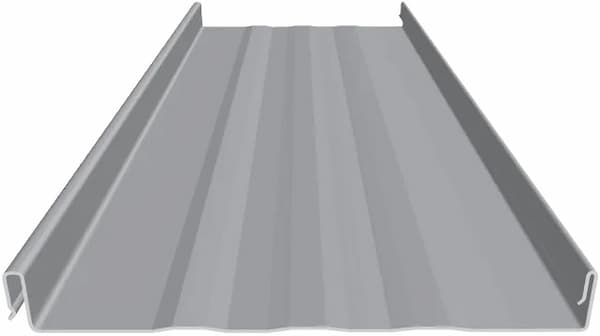
The Armour Loc Clip Panels from 1st Coast Metal Roofing Supply offer a combination of clean, linear elegance and durability, making them a top choice for homeowners and business owners looking for a long-lasting and attractive roofing solution. These Snaplock panels are concealed-fastened, giving them the sleek appearance of standing seam panels but at a more economical price. See the Roof Anchor Compatibility Chart for 1st Coast Metal Roofing Supply Armour Loc Clip Standing Seam Metal Roofing.

Benefits of Armour Loc Clip Panels
Durability: Known for their long lifespan, these panels will save money by reducing the need for frequent roof replacements.
Energy Efficiency: Metal roofing naturally reflects heat, reducing energy costs by keeping your building cooler in hot weather.
Low Maintenance: Armour Loc Clip Panels require minimal upkeep, reducing both time and money spent on roof maintenance over the years.
These panels are an excellent option for various applications, including residential and commercial projects. Armour Loc Clip Panels are designed for installation over a solid substrate and require a higher roof slope than structural standing seam systems.
Specifications and Certifications
Available in 24-gauge steel and .032 aluminum, these panels are certified for use in High-Velocity Hurricane Zones (HVHZ), making them an ideal choice for areas prone to hurricanes and high winds.
24-gauge steel Armour Loc Clip Panels, with a design pressure of -166, are approved for both HVHZ and non-HVHZ areas.
.032 aluminum Armour Loc Clip Panels, with a design pressure of -147.5, are approved for use outside HVHZ zones.
Fall Protection for Armour Loc Clip Panels
Working on standing seam roofs like Armour Loc Clip Panels requires specialized fall protection to ensure workers' safety and the roof's integrity. Here's a breakdown of compatible fall protection products:
24-gauge steel panels are compatible with all SSRA (Standing Seam Roof Anchor) products, including the SSRA1 Seam Anchors, SSRA2 Adjustable Roof Jacks, and SSRA3 Anchor Plates. These systems provide a secure and non-invasive solution for tying off workers and protecting the roof and the people working on it.
SSRA1 Seam Anchors: These clamp onto the standing seams without penetrating the roof. They provide a secure attachment point for safety lines, preserving the roof's weatherproofing and structural integrity.
SSRA2 Adjustable Roof Jacks: These roof jacks allow workers to place wooden walk boards between the SSRA1 Seam Anchors, creating a stable walking platform. This process reduces the risk of falls by providing secure footing on metal surfaces.
SSRA3 Anchor Plates: Mounted on top of the SSRA1 Seam Anchors, these plates allow for the installation of temporary horizontal lifelines, allowing workers to move safely across large areas of the roof.
.032 aluminum panels: The Ridge Pro Steep Assist Anchor is the recommended fall protection solution for aluminum panels. This product is ideal for roofs with slopes between 6/12 and 12/12, providing a secure anchor without penetrating the metal surface.
With these fall protection solutions, contractors can work confidently on Armour Loc Clip Panels, knowing their safety and the roof's integrity are fully protected.
Standing Seam Metal Roof Anchor Panel Compatibility Chart For 1st Coast Metal Roofing Supply
Armour Loc Panel |
Armour Loc Clip Panel |
|
|---|---|---|
| YES | YES | |
| YES | YES | |
| YES | YES | |
| YES | YES | |
| YES | YES |
Contact Us For More Information
For further details on roofing solutions and fall protection systems, contact us at 863-703-4522 or www.StandingSeamRoofAnchor.com. Let's work together to make your roofing projects safe, beautiful, and built to last. For more safety tips, check out OSHA's 48-page fall protection manual. Once you have determined the most suitable anchors for your roof system, download our free Anchor Inspection Form.
Safety Tips For Standing Seam Roofs
Equip Workers with High-Quality Safety Gear
Outfitting your crew with high-quality personal fall protection equipment is non-negotiable for safety on metal roofs. Ensure every worker uses a full-body harness, shock-absorbing lanyards, and other fall arrest systems that meet OSHA standards. A top-tier harness can significantly reduce the impact of a fall. At the same time, a properly chosen lanyard minimizes the risk of serious injury. Invest in durable and comfortable equipment so workers are more likely to wear and maintain it properly.
Use Specialized Anchor Systems for Standing Seam Roofs
Choosing the right anchor system is critical for standing seam metal roofs. Always opt for anchors that clamp directly onto the seam without penetrating the metal. This practice preserves the integrity of the roof and prevents leaks. Avoid anchors that require mounting over roof clips, as locating clips on existing roofs can be difficult and dangerous. Installing anchors that aren't compatible with the seam can lead to improper tie-off points, increasing the risk of accidents.
Ensure Proper Footwear for Stability
Working on metal roofs requires footwear to ensure stability and reduce slips. Equip your team with non-slip boots for traction on smooth, slick metal surfaces. This practice is essential for wet or icy conditions, which can turn a metal roof into a hazardous environment. Proper footwear is a simple yet effective way to enhance safety and minimize the risk of falls on sloped or standing seam roofs.
Encourage the Use of Trauma Straps
Incorporate trauma straps into your fall protection system to safeguard workers from suspension trauma following a fall. Trauma straps allow workers to relieve pressure and restore blood flow to the legs while waiting for rescue. Train workers thoroughly to use these life-saving tools correctly and ensure they equip every harness on-site.
Promote a Culture of Safety
Building a strong safety culture within your company is crucial for ongoing protection. Safety meetings, toolbox talks, and fall protection training help maintain awareness and prevent complacency. Encourage workers to report hazards immediately and perform frequent equipment inspections to ensure all fall protection gear remains in good condition. Instilling a safety-first mentality leads to fewer accidents and more efficient project completion.
Develop OSHA-Compliant Safety Plans
Before any roofing project begins, create a comprehensive, OSHA-compliant fall protection plan that outlines the specific risks and solutions for each job site. This plan should include an emergency rescue plan for retrieving workers in case of a fall. Having a solid rescue plan in place reduces response time. It ensures injured workers receive prompt medical attention, which can be life-saving in critical situations.
Ensure Stable Access Points
Setting up stable access points is a critical first step before workers ascend to the roof. Ensure that ladders and scaffolding are adequately secured and placed on firm, level ground. Follow OSHA's 4-to-1 rule, meaning the ladder base should be 1 foot away from the structure for every 4 feet in height. This practice reduces the risk of ladder falls and makes rooftop access safer for workers.
Install Permanent Roof Anchor Systems
Consider installing permanent roof anchor systems for buildings that require regular maintenance or future inspections. These fixed anchors offer reliable, always-available worker tie-off points, ensuring continuous protection. Permanent anchors are ideal for reducing setup time and providing a secure connection for maintenance crews, which is especially beneficial on commercial properties or structures with frequent roof access.
Set Up Protective Barriers for Work Zones
Creating clearly defined work zones using guardrails or warning lines is essential on low-slope roofs. These barriers establish a physical boundary to prevent accidental falls and help workers remain aware of the edge. This method is particularly effective for larger job sites where multiple crews may work simultaneously, helping keep everyone safe and focused.
Consult Experts for Curved Metal Panels
Curved metal roofs present unique challenges for fall protection. Avoid using standard seam-mounted anchors on these panels, as their curvature can interfere with proper attachment. Instead, consult with certified fall protection experts to design a customized safety plan for the roof's shape. This process ensures that workers are adequately protected and the roof remains undamaged during installation or maintenance.
By implementing these enhanced fall protection strategies, roofing contractors and workers can ensure a safer working environment on metal roofs while adhering to OSHA guidelines and using the latest fall protection technology.
Disclaimer
The views, recommendations, and information presented in this blog are solely those of the author and do not necessarily reflect the opinions or positions of the featured panel manufacturer, its brands, subsidiaries, or parent companies. Customers are strongly encouraged to reach out directly to the roof panel manufacturer for inquiries regarding fall protection compatibility with their products and to address any potential warranty issues that may arise following the installation of our products.



